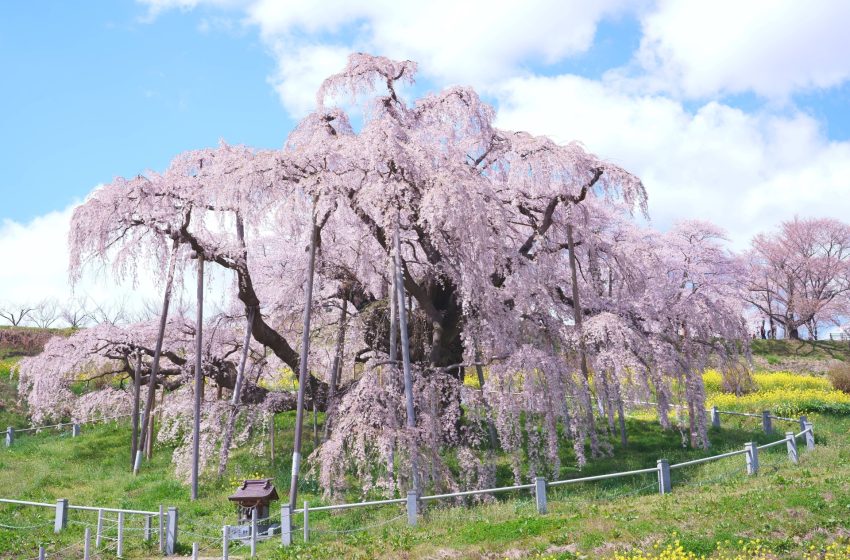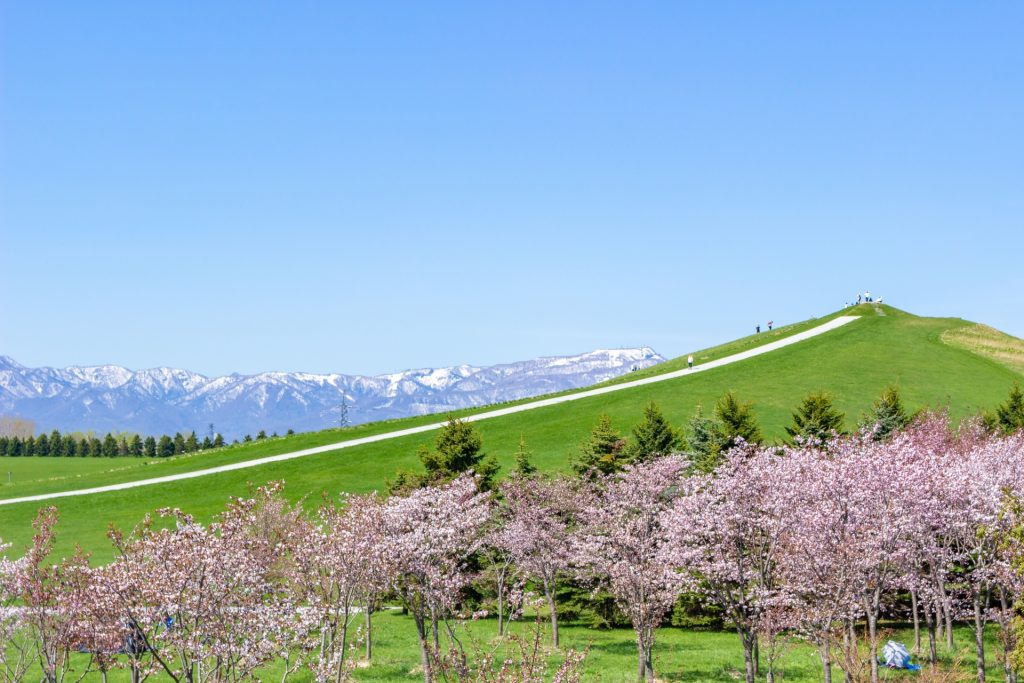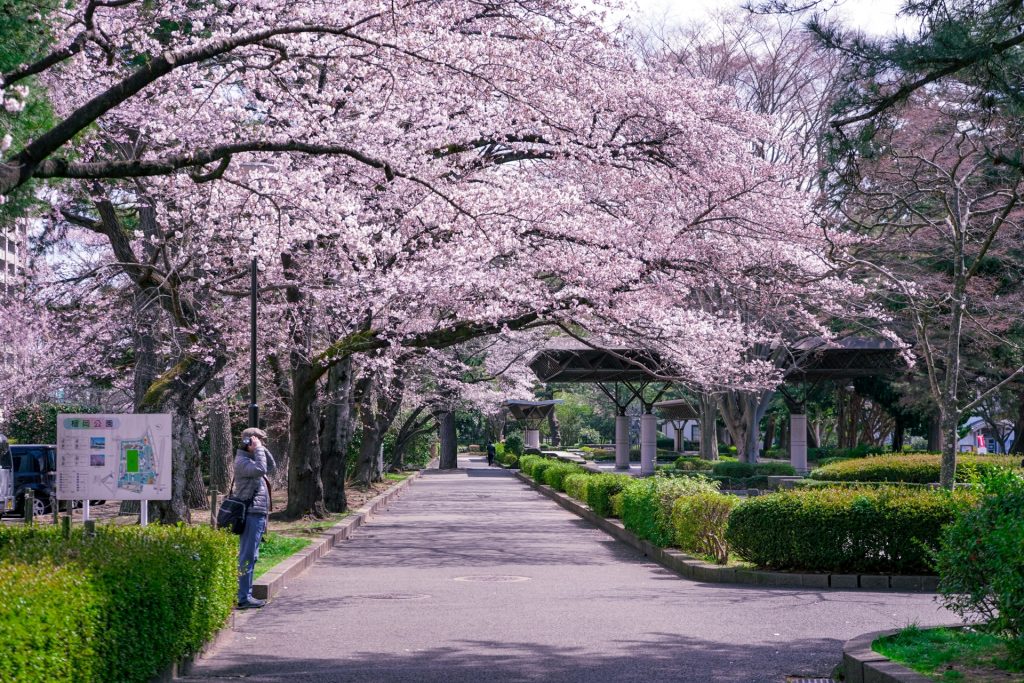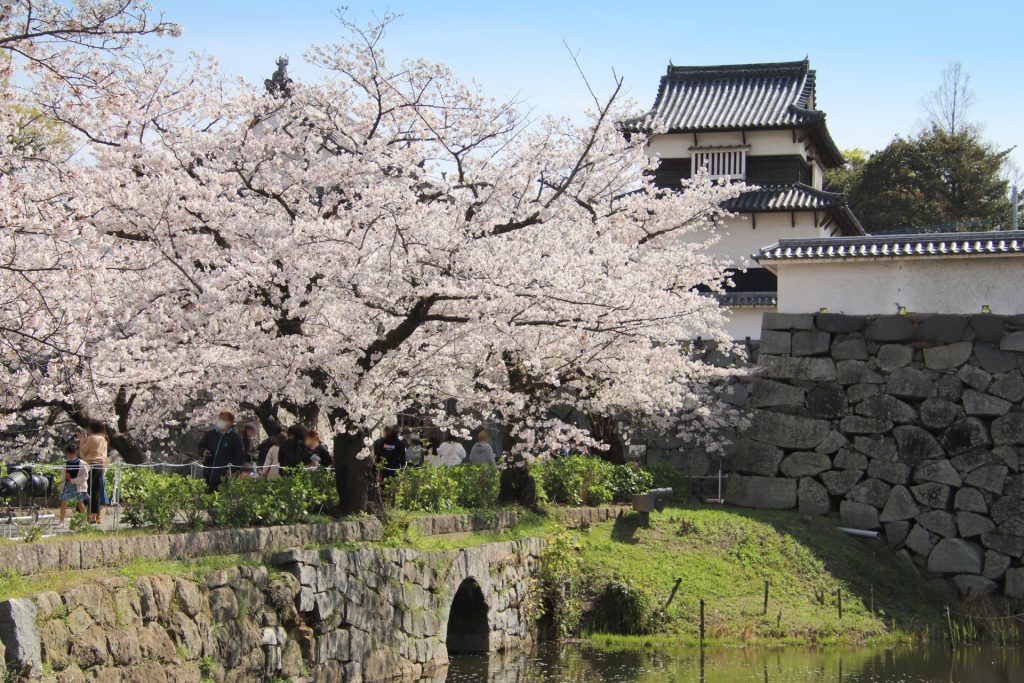
Miharu Takizakura: A Living Legacy of Fukushima’s Cherry Blossoms
In the heart of Fukushima Prefecture lies a natural treasure that has captivated the hearts of many — the Miharu Takizakura. This cherry blossom tree, whose name translates to “waterfall cherry tree” (滝桜, Takizakura), is not just a symbol of spring’s beauty but also a living testament to resilience and timelessness. Let’s delve into the enchanting world of the Miharu Takizakura, one of Japan’s most revered and spectacular cherry blossoms.
The Legend of Miharu Takizakura
Situated in the small town of Miharu, the Miharu Takizakura is considered one of the Five Great Cherry Trees of Japan. Believed to be over 1,000 years old, this weeping cherry tree (shidarezakura) stands about 13.5 meters tall and boasts an extensive canopy that spreads over 25 meters in width. Each spring, it transforms into a breathtaking cascade of pink, drawing visitors from across Japan and around the world.
A Symbol of Resilience
The Miharu Takizakura’s significance transcends its natural beauty. In the aftermath of the 2011 Great East Japan Earthquake and subsequent Fukushima nuclear disaster, the tree emerged as a beacon of hope and resilience for the people of Fukushima and all of Japan. Despite the challenges faced by the region, the enduring bloom of the Takizakura serves as a reminder of nature’s ability to withstand adversity and flourish.
Viewing the Miharu Takizakura
The best time to visit the Miharu Takizakura is during the cherry blossom season, which typically peaks in late April. During this period, the town of Miharu welcomes thousands of visitors, offering special night-time illuminations that cast the Takizakura in a magical light. The sight of its delicate pink blossoms under the stars is an unforgettable experience, symbolizing the ephemeral beauty of life.
Cultural Celebrations
The Miharu Takizakura is not just a natural wonder but also a cultural icon. During the sakura season, the area around the tree comes alive with festivals and events celebrating the arrival of spring. Visitors can enjoy traditional Japanese music, dance performances, and a variety of local foods, making it a perfect opportunity to experience Japan’s rich cultural heritage.
Preserving the Legacy
Efforts to preserve and protect the Miharu Takizakura are ongoing, with the local community and authorities working together to ensure this natural monument can be enjoyed by future generations. The tree’s remarkable longevity and the care it receives are a testament to Japan’s deep respect for nature and its commitment to conservation.
Conclusion
The Miharu Takizakura is more than just a cherry blossom tree; it is a symbol of beauty, endurance, and the spirit of the Japanese people. Its yearly bloom is a cherished event that brings together individuals from all walks of life, reminding us of the transient nature of beauty and the importance of cherishing the moments we have. If you find yourself in Fukushima during the spring, a visit to the Miharu Takizakura is an experience you won’t want to miss — a chance to witness a living piece of Japan’s natural and cultural legacy.




